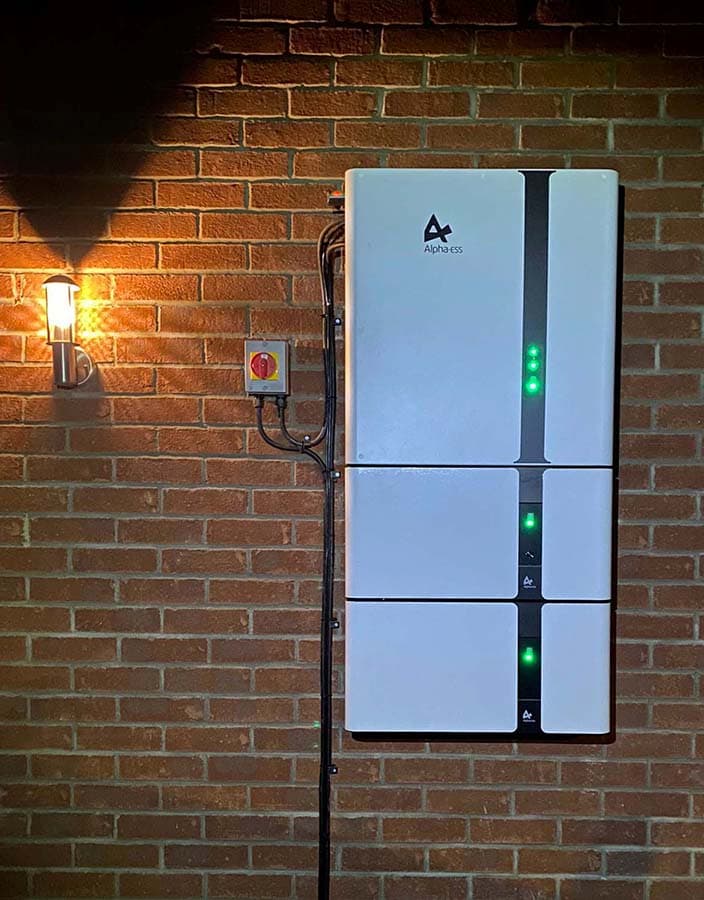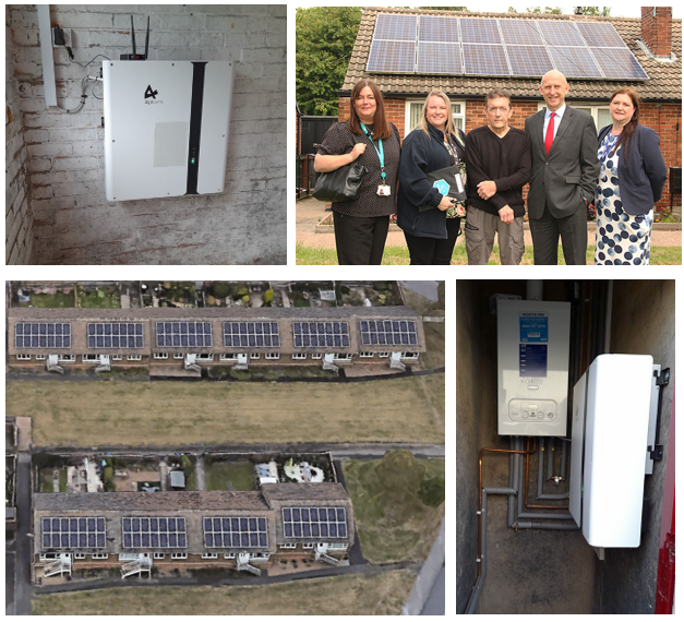Energise Barnsley’s Battery Storage Projects
Battery Storage Technology draws energy from power sources, such as Solar PV, and stores it for future use.

Energise Barnsley’s Battery Storage Projects
Battery storage can enable homes to:
- Store unused energy when it is more readily available (for example, from solar panels during sunshine) or more affordable (such as at off-peak times from the national grid).
- Access energy when needed, at times of increased pressure on the system (For example, during energy shortages).
Battery storage devices, when utilised correctly, can help residents save money, feel more stability within their energy supply, and have more flexibility in their lifestyles/days.
Energise Barnsley undertook three individual battery storage projects between 2015 and 2023, aiming to increase social housing residents’ access to the benefits of renewable technology.
Barriers to the adoption of renewable technology in social housing include:
- Requirements for permissions from social housing providers for the installation of the technology, which can vary from area to area
- Condition of the homes
- Cost of installation.
Energise Barnsley’s mission is to enable a just transition towards renewable energy. We aim to increase access to renewable technology for those to whom procurement is usually unaffordable or difficult to manage.
Our battery storage projects tested how to:
- Achieve energy and cost-saving benefits for domestic use of battery storage technology
- Optimise use of the technology to maximise these benefits
- Communicate the benefits of this technology, as well as the utilisation of this technology, to households.

Our Impact

370
Homes involved across Barnsley

143
Battery Storage Systems installed

£500
Financial savings per household. per year

4 trees grown for 10 years
The equivalent CO2 savings per household
Find out more about our Battery Storage Projects
Project Breathe
Project Smartgrid
Frequently Asked Questions
The batteries in our battery storage projects absorb excess power generation, preventing it from being transported back onto the grid. These charged batteries can then supply the evening load. By 2030, it’s likely that 70-80% of rooftop PV systems will be installed with a battery.
Batteries can absorb excess power generation, preventing it from being transported back onto the grid. These charged batteries can then supply the evening load. By 2030, 70-80% of rooftop PV systems will likely be installed with a battery, so it is imperative that we understand how we can best use the technology. Northern Powergrid have produced a helpful animation on distribution storage.
An ancient system with modern problems
England’s power network was designed over 90 years ago, for a different type of energy production and distribution.
Originally, power was generated at power stations, such as these power generating stations in Yorkshire. High-voltage networks (such as large pylons) transported electricity produced at these stations to local energy substations. Low-voltage electricity networks (underground cables and smaller pylons) then distributed power to buildings for customers (end users).
Since the introduction of domestic PV systems in 1995, the network now needs to cope with energy generated by the end user as well as by the power stations, and for this energy to be sent back through low-voltage electricity networks.
The additional pressure on the power networks can overburden electricity transmission systems. This significantly reduces the lifespan of system equipment, such as transformers and cables, and affects their efficiency. It also can lead to blackouts.
Low-voltage electricity networks distribute electricity (up to 132kV) between a substation and a customer’s meter via small pylons and underground cables. The increasing adoption of solar panels is causing the network to encounter more thermal and voltage issues by adding additional energy into the system, as PV systems send unused energy back into the network. Therefore, the number of PVs that can be added to a system is limited.
During the evening peak demand, the following activities are putting additional pressure onto the electicity networks:
- Cooking
- Heating
- Washing / Drying
- Car charging
- Electrical appliances
- Transportation.
Because of the increased demand on the network, electricity transmission systems can be overburdened. This creates a significant reduction in the lifespan of system equipment, such as transformers and cables, which affects their efficiency. It also can lead to blackouts,
As PV systems produce most of their energy during the day, but energy use is highest at night, this energy is being transferred backwards and forwards between homes and the system. Reducing this transfer could:
- Increase the life of network equipment
- Maintain equipment efficiency, leading to less loss of energy
- Avoid or delay some of the large investment costs required for the National Grid—it’s currently estimated that £60bn of upgrades are required to accommodate the government’s 2030 Net Zero goals.
Current estimates are that 50% of electricity generated by PV gets sent back to the grid. Battery storage devices, in particular, could enable a better-managed expansion of decarbonised energy generation technology, helping to reach Net Zero targets.
Our Battery Storage projects aim to increase understanding of whether Battery Storage:
- Benefit the network;
- Can maximise the benefits of PV; and,
- Can be optimised by battery placement, mode and use;
At Energise Barnsley, we’re also particularly interested in Battery Storage as part of the solution towards fuel poverty.

Battery Storage
